[Editor's note: This story appears in the July 2020 edition of Oil and Gas Investor. Subscribe to the magazine here.]
In the Powder River Basin, Joe Mills was expecting to sell Samson Resources II LLC this year. “Samson is doing very well, thank goodness,” Mills, president and CEO, said in early May.
“We’ve made a lot of good decisions along the way with Samson—outside of the one disappointment: I really thought we would be exiting right about now.”
The rig count in Wyoming had fallen to two by mid-May from 25 the first week of January when WTI was $63, according to the Baker Hughes Co. count. “I don’t know if we’ll go to one or to zero,” Mills said. “It’s just a matter of how long this thing will go.”
Tulsa, Okla.-based Samson itself has about $10 million in debt. Its spring bank-facility review “was redetermined down, but not as bad as everybody else,” he said.
The borrowing base was lowered from $100 million to $80 million, “giving us approximately $70 million of liquidity and a very strong hedge book.”
Mills joined the company in 2017 after the former Samson Resources Corp. exited Chapter 11 restructuring. Privately held, its roughly 80 investors are primarily former second-lien debtholders.
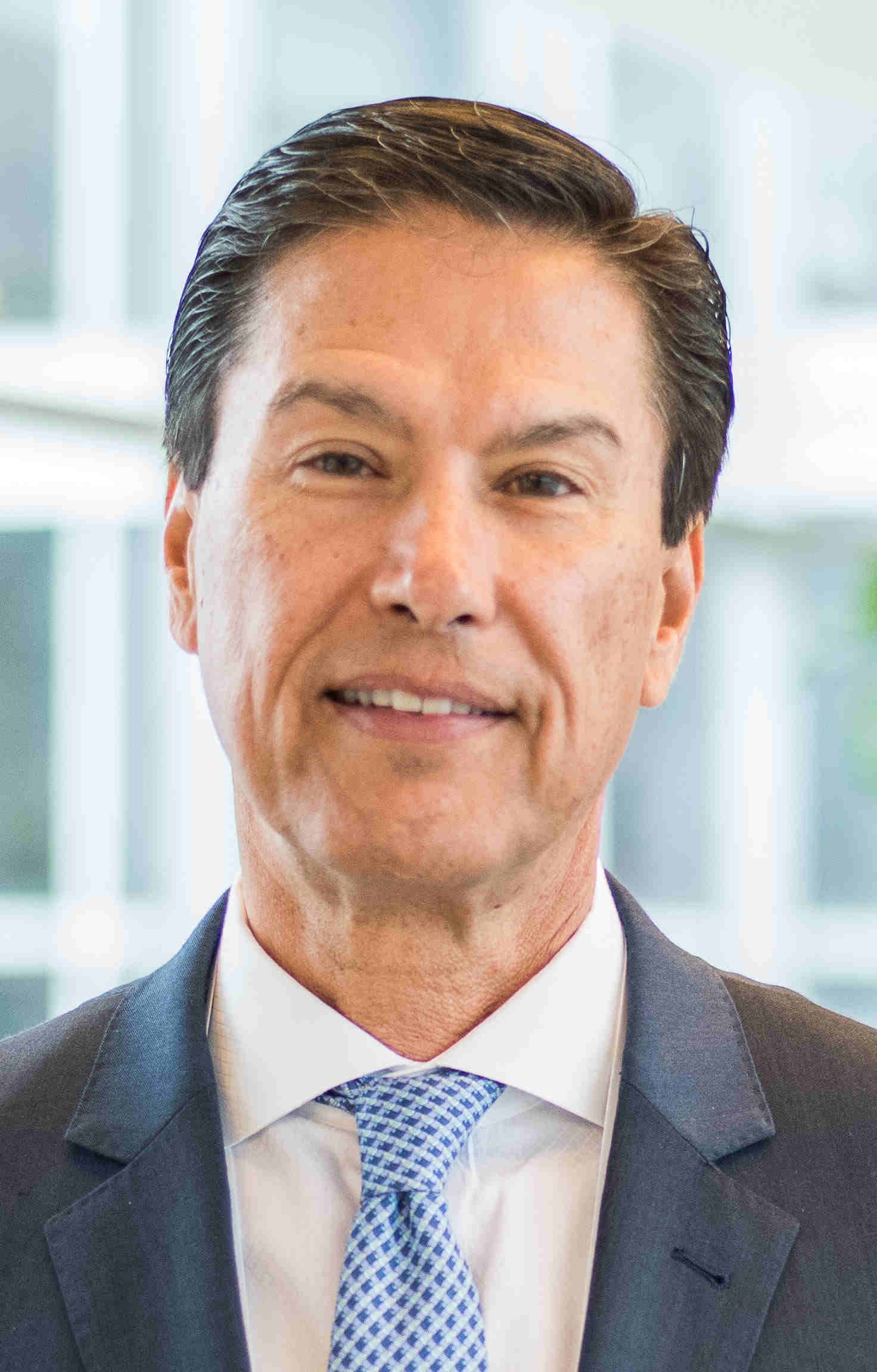
Cost-cutting and paring Samson’s portfolio to only the Powder during the past three years Mills has led the company “made us leaner and meaner and more profitable,” he said, “which obviously is going to carry the day through this epic mess.”
With shut-ins, production was down to 300 bbl/d in May from 8,000 bbl/d in March. “We’re evaluating our production shut-ins month by month,” Mills said. “I expect we will remain fairly shut-in through June and hopefully start to bring wells back on in July or August as prices start to improve.”
WTI closed on March 9 at $31. Mills was already on the phone, arranging a board meeting.
“I said, ‘This is what we’re going to do: We’re going to shut down rig activity and live off our hedges. And we have to extend our runway to the end of 2021.’”
About 90% of Samson’s shut-in 8,000 bbl/d are hedged at $60 this year; in 2021, 63% is hedged at $55.
Shut-in-while-hedged may become complicated. Most credit facilities prohibit being more than 100% hedged. With production shut-in, though, producers may be over-hedged.
“Right now, we’re living off our hedges,” Mills said. “Our hedge book is close to $50 million mark to market.”
If over-hedged more than two consecutive months, bank agreements usually require the excess contracts be sold. “[The agreement] doesn’t allow us to just keep doing it forever. But [selling the hedges means] you’re just bringing in the cash. You’re just accelerating it.”
The income can’t be treated as EBITDA under the credit facility, though. “There are some nuances to it, and everyone is having to deal with these.”
Samson initiated a conversation with its bankers when it saw the situation. “They said, ‘Yeah, this is really unusual.’”
It was worked out. “Everyone is working well together—so long as you’re not in receivership and you’re not in the middle of restructuring. Then, obviously, the banks have a different tenor,” Mills said.
‘Year of the Powder’
The Powder itself is demonstrating potential, after a sluggish start during the past decade. Major operators are Occidental Petroleum Corp., EOG Resources Inc., Devon Energy Corp. and Chesapeake Energy Corp.
Samson’s roughly 132,000 net acres are primarily in southern Campbell and northern Converse counties where most of the basin activity is concentrated. It had two rigs drilling in February, both in northern Converse.
“For the Powder, this downturn is such a shame,” Mills said. “I thought 2020 was going to be the Year of the Powder. The work Devon, EOG, Occidental, Chesapeake and all the smaller independents are doing to drive down the overall drilling-cost structure has just been amazing.”
And the cost-decline wasn’t from “gouging the rig companies and other service providers. We’re starting to see quantum leaps in our ability to drill these wells faster than ever. Our penetration rates are up substantially.”
Devon reported first-quarter new Powder wells cost $6.4 million. In Niobrara B, its Tillard 36-4X averaged a 90-day rate of 1,200 boe/d, 85% oil.
EOG reported its Powder Niobrara wells cost $663 per lateral foot; Mowry, $737. A new completion design in the former is delivering 45% more oil; in the latter, 70%, it added.
Samson’s targets are Turner and Niobrara. Mills said both “are clearly the two front-runners in the basin.”
Niobrara wells were getting to sub-$7 million, drilled and completed; entering 2019, costs had been $12 million or more.
“It’s a game changer in economics. At $37 oil, you’ll see the Turner and Niobrara rig activity pick back up. At $37 oil, you can generate a decent return.”
EUR was reaching between 800,000 MMboe and 1.2 MMboe from Turner wells, underlying the Niobrara. From the Niobrara, EUR was between 600,000 boe and 1.3 MMboe.
In southern Johnson County, where Chesapeake is, the Niobrara tends to be gassier. Where Samson operates, it’s oilier. “But the GOR can vary across the basin—as low as 60% oil to as high as 85% oil, depending on where you are,” Mills said.
While “Everyone looks for at least 900,000 boe to 1 million boe that is at least 75% oil, if at $7-million-or-lower D&C costs, 700,000 boe becomes very economic.”
For Samson, “At $40-plus, we’re back to drilling,” he expects.
Zombie watch
While plans were to sell Samson this year, might it become a buyer instead? “We are being opportunistic,” Mills said. “There is no doubt some balance sheets are not as strong as ours. We’ve had calls from people talking to us about buying them out.”
Samson won’t borrow to do that, though. “We have an excellent portfolio and balance sheet. I’m not interested in scaling Samson up just to tread water,” Mills said.
A one-plus-one deal would have to equal three—making the company more attractive and extending its runway. Otherwise, “We’re happy to stand where we are,” he said.
But he does expect some consolidation in the Powder, if not by Samson itself. “It kind of needs to happen.”
Samson will likely consolidate some smaller players. “Scale matters today more than ever. Being small is not a strength today. To capital providers—I don’t care if it’s private equity or hedge funds—scale matters,” Mills said.
And big buyers want big deals. “They’re going to want to eat larger fish than small ones because of the time and money required. I think you will see us be opportunistic in this downturn,” he added.
Devon and EOG are in good shape to bolt on in the basin, for example, he said. In April, EOG raised $750 million in a 4.375% senior-note sale due 2030 and $750 million from 4.95% notes due 2050.
It had used cash on hand on April 1 to pay $500 million of 2.45% notes due that day. Its $2 billion senior unsecured credit facility was undrawn.
Devon in early May had $1.7 billion of cash and an undrawn facility of $3 billion. Its $4.3 billion of senior notes’ first maturities begin in late 2025.
While some operators have powder, those and others that are shut-in “means everyone’s inventory has been extended that much further out,” Mills said. “The big guys don’t have to make acquisitions; they aren’t burning through their inventory right now.”
Absent of restructuring-driven asset offerings, “I’m not optimistic about M&A returning any time soon,” he said. And operators that enter reorganization in this cycle might not get just fresh paint and put back in the field.
“I don’t think you’ll see that this time,” Mills said. “I think you’ll see more and more get broken up and sold off.
“The banks don’t want to run these companies. We have too many walking zombies out there. We need to deal with the walking zombies.”
Operators should be ready to make it through the end of 2021, he estimates. “If you cannot survive with what you have today—and without being able to access new capital until the end of ’21—then you better be thinking of what your options are.
“And I mean $35 oil to the end of 2021,” he said.
Time might show that fundamental oil-demand mechanics have been altered irreparably, he added. “We might never see—or certainly not in the next five or six years—another 100 MMbbl/d demand cycle again.”
‘Have to shrink’
Also in the Powder, Gene Shepherd and the team at ATX Energy Partners LLC have been looking at deals since entering the basin in 2017. The co-founder and CEO was CFO for Brigham Exploration Co. as it made an early entry to the Bakken in 2005, selling its 376,000 net acres for $4.4 billion to Equinor ASA in 2011.
He then co-founded and led Brigham Resources LLC as its CEO, selling a similarly grassroots-grown, 77,000-net-acre Delaware Basin portfolio for $2.6 billion to Diamondback Energy Inc. in 2017.
“My view is it could take 18 months or longer for the global economy to get back to where it was,” Shepherd said. Meanwhile, “Our industry will go through a period of consolidation and rationalization. We’re going to have to shrink.”
How much? “I don’t really know; maybe 50% is a guess. A lot of it will depend on the timeline for the global economy to recover,” he said.
Shepherd sees larger independents high-grading their inventory and focusing capital there, “which leaves a lot of acreage and opportunity that, depending on oil prices, is not going to compete for capital.
“So what does an operator do with acreage that’s not competing for capital? Unless they have a bullish view on a recovery, it’s hard to imagine that they keep it in inventory.”
If putting it on the market, though, from where do the buyers get the capital? “The world has been turned upside down,” Shepherd said. “I think there is going to be a lot of opportunity and a lot less capital, whereas last year we had the inverse.”
He expects “a number of” private-equity sources that had been focused on energy “will leave the space. Some of the traditional providers don’t have any capital, and those that do are being very careful as to how they put it to work.”
“So who takes advantage of the very unique opportunity that we expect to see later this year?” In the standstill that was the second quarter, Shepherd said, “the A&D markets were locked down.
“But, in [this] half, as this rationalization gets kicked off and attractive opportunities start to surface, how will operators source capital and what will be the underwriting criteria and return expectations for this capital?”
Looking at the aftermath of the 1980s, the robust return of capital was slow to come. “I think we will go through a period where there is just too much uncertainty over the global economy reengaging and getting back to 100 MMbbl/d.
“It’s a timing question that I don’t think anyone can answer right now,” he said.
Some investors with past experience with energy but that haven’t played it in a while may come back. “Initially, maybe some deep-value-oriented investors,” Shepherd said. “We have recently talked to several that are looking.”
How serious are they? “I don’t know. It feels like we need to see oil prices continue to recover and serve as a catalyst to trigger new sources of capital to flow to the industry.”
ATX spent most of 2019 attempting to add to its portfolio, targeting opportunities with developmental risk to complement ATX’s exploratory foothold in the Powder in Johnson County, Wyo.
“Last year, the A&D bid/ask spread was too wide, and we didn’t get a transaction done. In hindsight, that worked to our benefit.”
Maybe the Permian could become affordable? “There will be some outstanding opportunities to look at that,” he said. “Before the downturn, we didn’t think we would have a chance to compete. We are very excited.”
Science-ing
Austin, Texas-based ATX picked up 121,000 net acres, mostly contiguous, in Johnson County, beginning in 2017 with an initial 35,000 net from Black Hills Exploration & Production.
Before this past March, coring had been done, and four science wells had been drilled. “We were planning to take what we had learned, make some significant adjustments to our drilling and completion formula and apply those learnings in our next group of wells,” Shepherd said.
Plans were for three more wells this past spring. “Obviously, those efforts were shelved.”
ATX shut in its four wells in April as the differential in the basin blew out to more than $15 a barrel. But it put them back online in mid-May as the basis improved.
The Powder was picked by ATX for its resource potential, while the Johnson County entry was exploratory in nature. Delineation and exploitation of the Powder was slowed in the past decade by the presence of conventional targets “productive enough” to distract from going after the source rock.
The Powder is “way behind other basins in terms of prosecuting its shale potential,” Shepherd said. “But—with its tremendous, oily resource potential—it’s just a matter of time and probably higher oil prices for this to change.”
Of ATX’s initial four wells, three were landed in different benches of the Niobrara, and one was landed in Mowry.
The Powder is complicated. “The geology is very different,” Shepherd said. “You have widespread lineaments that conduct heat flow, creating thermal anomalies necessary for source-rock maturity from basement rock.”
If right on top of some of the larger anomalies, there is a greater gas component in the GOR. ATX thinks it’s found a spot in Johnson County in the oily window.
Shepherd expects it will take another dozen wells for ATX to delineate the shale potential on its leasehold. “We have more work to do on the Powder but won’t get back to work until we see higher oil prices.”
Hit the brakes
David Gonzales spoke at Hart Energy’s DUG Bakken & Rockies conference in Denver in mid-February. In May, February had seemed like an eternity ago.
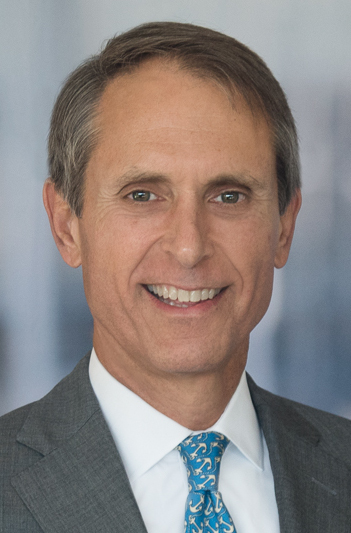
Left page,
Denver-based Bison Oil & Gas Energy Partners II LLC was formed in 2017 after a sale of the first Bison’s portfolio in the Denver-Julesburg Basin (D-J) to Extraction Oil & Gas Inc. The second Bison acquired leases in the D-J’s northeastern extension and in the San Juan Basin; the latter property was sold in 2019.
This past fall, the group formed Bison III; for it, the team is looking at a platform entry “throughout” in “the general Rockies area” with a heavy focus on North Dakota. All three of the Bisons are backed by Carnelian Energy Capital Management LP.
In the D-J, Bison II has drilled 22 wells on roughly 50,000 net acres entirely in rural northeastern Weld County, Colo., clear of urban opposition to drilling.
Mid-reach laterals currently cost it about $4.9 million—drilled, completed, online. Gonzales expects that to fall to between $4.6 million and $4.8 million if it were drilling now. Its wells to date had averaged 30-day peak production of 125 boe/d per 1,000 lateral feet, approximately 80% oil, with a flat decline.
It had a large program lined up for May and “hit the brakes on that,” Gonzales said. It has no drilled-but-uncompleted wells. It shut in all of its pads in April, except for one—an eight-well pad it had just drilled.
“It’s our first full-density unit in Baja, which is our core area. So we wanted to make sure we got good data on what an eight-well pad looked like in our prospective region.”
Keeping it online, Bison should have “the data we need to fully drill out the remainder of our acreage and make any adjustments between now and when we start drilling again,” Gonzales said. “That’s what our thought was.
“This just positions us to come out of this downturn with a lot more momentum and allows us to play a little more offense,” he said.
‘Ready to go’
Differentials haven’t been overwhelming in the D-J to date. “I haven’t seen a ton of movement this year,” Gonzales said, “mainly because many companies signed term contracts—for one or five or 10 years.”
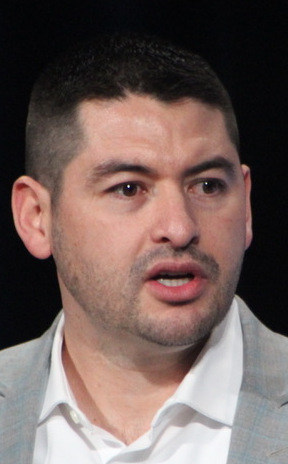
For Bison, the differential has actually improved for its barrels, “Niobarrels,” outside the core of Wattenberg Field. The sub-42-API oil is needed in blending refinery feedstock. Shut-ins by other producers had resulted in a shortage.
“The higher-API oil couldn’t flow because they needed our barrel,” Gonzales said. “Bison’s barrels were able to flow through the system continuously.”
The first Bison was formed during the downturn in 2015; the third one, in 2020. “We’re kind of contrarians. We raise capital to grow in a down market,” Gonzales said. “This is the market where we thrive. We have fresh capital and no liabilities.”
Bison III is fully capitalized and “ready to go,” he added. “We’re extremely busy right now, combing through acquisitions.”
Some offers had already been made by early May.
The team finds parts of North Dakota “interesting in terms of being economically justifiable.” Still, “They’re just hard to get into” as well.
“In North Dakota, there is a lot of data, so it’s much less exploratory,” Gonzales said.
“We’re good at prospecting, and we’re a good operating team. But we want to go to areas where we have controllable data points and we leverage the information available and quantify the variables controllable by us.
“If we can change those or enhance those, then we can underwrite the investment,” he said.
Capital ready
In a $155-million term-loan facility signed with Varde Partners Inc. in 2019, Bison II had a drilling program lined up in which it could draw on the financing as it went. “We didn’t have to take down the entire capital.
“Obviously it doesn’t make sense to produce those reserves at this price, so that capital is still sitting there for us to grow,” Gonzales said.
Can it draw from it for acquisitions? Is it exclusive to Bison II or can it be used by Bison III? “It is exclusive for Bison II, but we can use portions of it for acquisitions,” Gonzales said.
“It’s structured in how much we can use for that. It wasn’t necessarily intended for acquisitions; it’s intended for development. But there are buckets we can pull from for acquisitions.”
It’s fortunate, he added, that Bison II is in the D-J in a low finding and development (F&D) area. Looking at property elsewhere, he said “What we have found—and we love—is that our assets in the D-J are some of the most efficient assets in the country and some of the most economic.”
With that, a strong balance sheet and a strong hedge position, it has “allowed us to weather the storm pretty well. We are ready and able to ramp up development quickly in a modest price-recovery environment,” he said.
Many areas require $50 oil to be both economic and profitable. At Bison, “Our position in the D-J has extremely low F&D, so we start to get excited above $40, which puts us in a really good position to grow quickly in a recovery environment,” Gonzales said.
Oklahoma gas
Formed in first-quarter 2019, Red Wolf Natural Resources LLC is in the SCOOP/STACK—about 65% SCOOP. It picked up the 56,000 net acres—including some 500 legacy conventional wells that have the leasehold HBPed—from Apache Corp. in second-quarter 2019.
“We were very fortunate as we were getting our company formed,” said Drew Deaton, co-founder and CEO. The Edmond, Okla.-based E&P’s operated and nonoperated positions are in Stephens, Garvin, McClain, Pontotoc, Lincoln and Logan counties.
“It felt like a perfect starter asset. There is a lot of legacy. It’s HBP. It covers a lot of ground we like,” he said.
Some of its nonop wells, particularly newer ones, have been shut in, said Jeff Dahlberg, co-founder and COO. But none of its operated wells are shut in; about two-thirds of Red Wolf’s production is gas, including NGLs.
“So it doesn’t really help us to shut in our wells,” Dahlberg said. “It would affect us in a negative way because of the gas revenue we would lose.
“Combining residue gas and NGL revenues, net of the associated midstream costs, gives us acceptable prices. Not ‘great,’ but acceptable.”
Good gas winter
U.S. associated-gas production has declined while oil wells are taken offline. By late May, producers had shut in 1.6 MMbbl/d of the 13.1 MMbbl flowing before March.
“Gas prices should be strong the rest of the year,” Dahlberg said. “Predictions are for gas prices of $3.50 and $4 into the winter months, so that would be good for us.”
Deaton doesn’t expect it to last, though. “It’s easy for me to see a reaction—almost whipsaw—at some stage as supply and demand are trying to rebalance,” he said.
New-well decline curves were pretty steep in shale plays. Near suspension of new drilling and completions across the Lower 48 in oil basins will appear pretty quickly in diminished supply, Deaton said, resulting in a “burn off in the overhang of oil in storage.”
“It’s not too difficult to see a healthy recovery once those items come into balance,” he added.
Bloomberg reported in May that Diamondback would turn some wells back on at $30 oil. Others, it reported, said $30 is a critical price point.
Deaton said, “I would guess $30 works in certain areas, but I wouldn’t paint it across the breadth of where the [Permian] was active, say, maybe 12 months ago.”
Deaton favors a “managed recovery.” U.S. oil and gas producers are “ingenious, sometimes to our detriment. Our efficiencies have, at times, hurt us overall as an industry. We innovate, become real efficient, flood the market and hurt ourselves.”
Postponed
Red Wolf hadn’t had layoffs, although it was continuing in May to evaluate the possibility. Deaton said, “We run a pretty lean shop as it is.”
Most of Red Wolf management came out of Ward Energy Partners LLC, and the entire team has “very specific knowledge of the Anadarko Basin,” Deaton said. With its platform asset, it’s ready to grow.
“The best way to take on challenges such as this is to look for opportunities,” Deaton said. “It’s a cyclical business, and we can’t be totally shocked, although this one is quite a doozy.
“But we’re looking to grow and come out of this stronger.”
Backed by Pearl Energy Investments LP, the operator was looking at assets it could add to the portfolio. Deaton said, “One way we look at a downturn like this is certainly opportunistically. We’re looking to turn over stones to grow the future.”
He expects there will be fewer E&Ps on the other side of this era, “but those that are still standing should be stronger and in a better position, and that’s where we look to be.”
Whether adding property or not, it has plans for its existing acreage. “We had a couple projects in SCOOP that we were excited about that could extend the window a bit,” Deaton said. And it had been looking at oilier potential.
While the plan has been on hold, “It doesn’t take away the luster or excitement. It’s just postponed it.”
Dahlberg added, “We are fortunate that our acreage is HBP. We can be selective about when to develop our remaining acreage position. It will be there when the time comes to develop it.”
South Texas natgas
Beginning his oil and gas career in 1978, Glenn Hart was also a founder of two professional ice hockey teams—the Houston Aeros and the Laredo (Texas) Bucks. What would it be like to be in professional sports in 2020?
“That would be tough,” he said.
At his newest venture, Rio Grande Exploration & Production LLC, Hart also isn’t dealing with oil prices. The leasehold is in the dry-gas window of the Eagle Ford.
“It’s on the comeback trail,” Hart, president and CEO, said of the U.S. gas story. “In the dry-gas area of the Eagle Ford, we are only 100 miles from one of the largest manufacturing areas in North America, being Monterrey, Mexico, with plenty of pipelines and pipeline capacity to deliver the gas.”
Additionally, LNG users are nearby as well as the Houston Ship Channel. “The result is that gas prices in our region are typically Houston Ship Channel-plus with very low transportation rates.
“The net effect of this means that our region will consistently continue to have the best netback price in North America,” Hart said.
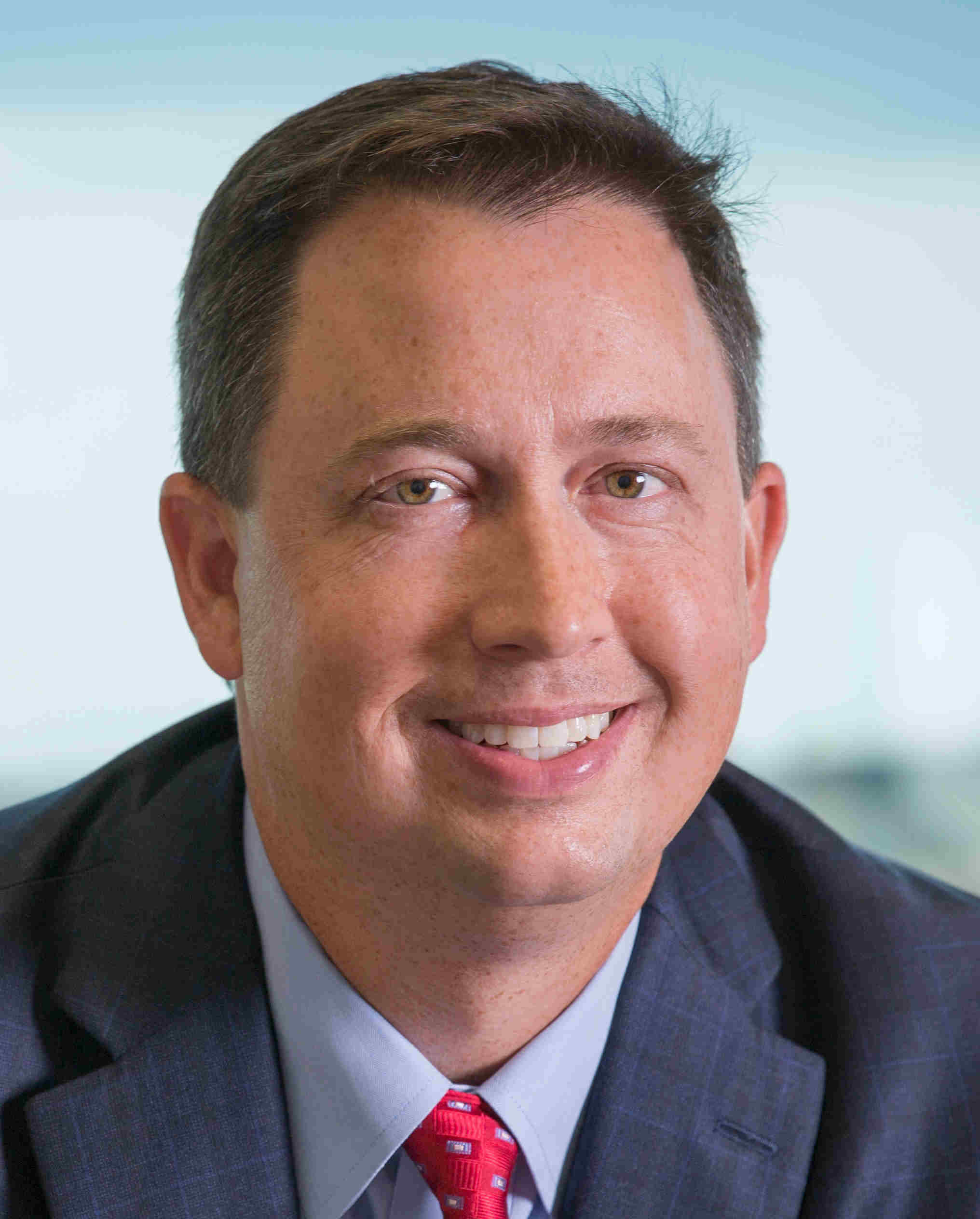
Houston-based Rio Grande’s property is some 70,000 net acres in Webb, Zapata, Jim Hogg, Duval, Live Oak and McMullen counties. The $20-million platform acquisition in 2018 of Columbus Energy LLC, an Amplify Energy Corp. subsidiary, came with some 68 Bcfe of PDP, producing 16 MMcfe/d.
“Timing is everything,” Hart said. “We got into our assets about two years ago. We’re in great shape.”
Rio Grande didn’t have a rig at work in the spring. Hart said, “We’re gearing up to start back up early [this] quarter. We didn’t get our program started until December.”
The asset has some 500 vertical wells a few miles apart from Rio Grande’s unconventional targets. Having acreage that has both types of opportunity gives it flexibility, Hart said.
“In the vertical, traditional world, we have dozens, if not hundreds, of little projects that we can deploy our capital to until gas prices get high enough to drill the big, sophisticated $6- and $7 million wells.”
There is a place in E&P companies today for both types of production, he added: conventional and unconventional. “We are not going to be beholden to drill horizontal exclusively, and we’re not going to be beholden to conventional drilling. That makes us a little different.
“I think that also gives us some patience in a downturn. The drilling economics in the last several months have been just horrible.
“No one should have been drilling wells in that situation. We didn’t,” he said.
‘Rumor time’
South Texas is also an area Hart and most of the team have worked in for more than 30 years. “So we have all kinds of relationships and knowledge,” Hart said.
The weekly staff meeting starts with “rumor time. We go around the table and talk about rumors.” It’s key to operating in the area, particularly as most of the land is held by huge ranches.
There’s an intersection in South Texas where digital aggregation of data just doesn’t do the job. “There’s not enough public data,” he said.
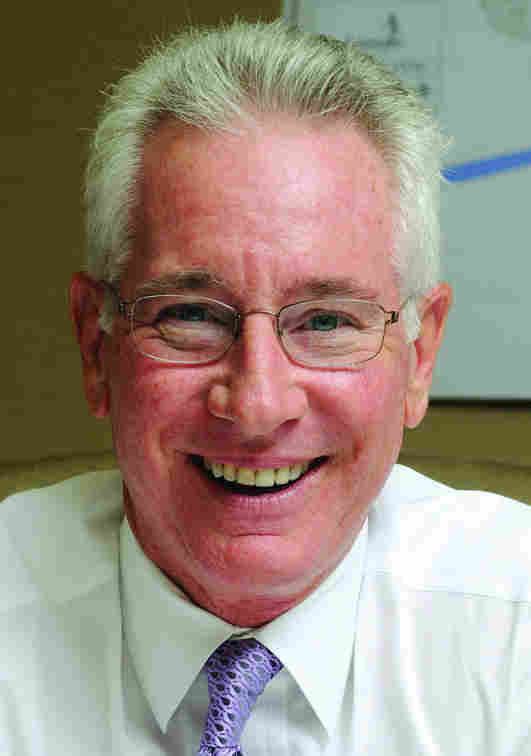
“For example, some of the most critical information—like pressure and choke size—never sees the light of public eyes, and that may be the most important information of all.”
Like the horse, “You can lead [artificial intelligence] to water, but you still can’t make it drink. AI is helpful, but humans are making the judgment.
“Only a human can understand what it means and put it into practice,” Hart said.
Several neighbors are under financial stress, despite an improving natgas price, as they were early entrants to the dry-gas window while it took some time to make the rock in the area pay, he said.
“It was literally so long that the private-equity guys hit their plateau where they could no longer reinvest the proceeds of their fund, and that left a bunch of operators stranded on the island out there without access to more capital,” Hart said.
Mezzanine capital appeared, “and that’s expensive capital that makes the hill even harder to climb. It’s just eating those guys’ lunch, and that’s where the M&A market is coming in.”
Meanwhile, many neighbors are operating with leases that have continuous-drilling requirements. Would the Texas RRC suspend that? Oklahoma has ordered that producers there could shut-in wells without losing their leases, for example.
Hart said that isn’t likely to work in South Texas. “The land owners here are too big and too powerful. We’re in the region of these gigantic ranches; in Oklahoma, it’s very fragmented.”
‘The big bucks’
Rio Grande has capital and little encumbrance, “so we’re looking for new opportunities in our space,” Hart said.
Its private-equity sponsor is Intrepid Investment Management LLC. In addition to Hart, Rio Grande was co-founded in 2017 by GS Gas LLC, whose principals include former Florida Gov. Jeb Bush and son Jeb Bush Jr.
The company hasn’t downsized in the downturn. “We just got here,” Hart said. “But I have the best team I’ve had in my entire career. It boggles my mind how good these guys are.”
About half were part of the team at South Texas-focused Laredo Energy, which was Hart’s most recent venture; the other half, formerly with SilverBow Resources Inc.
While there is a “shocking amount” of professionals leaving oil and gas, Hart said, “the ones staying are the cream of the crop.” And, he added, “They want to go to a better reward system.”
That would be more participation in the upside to soften the blow of another downturn, he said. These are professionals who didn’t join a PE-backed E&P early on, seeing it as job insecurity, and went “to big companies, and that’s not safe either.
“So you might as well go for the big bucks, if there is as much risk of losing your job whatever the company is,” Hart said. “I think that evolution has taken place.”
Getting services
After deep price cuts in 2015 to 2016, can operators wring much more of service providers? ATX’s Shepherd said, “There is some potential, but not to the degree we experienced back in 2014.
“Outcomes for service providers may range from eking out some level of positive margin to being marginally free-cash-flow positive. I’ve heard that some of the bigger operators in the Permian are asking for price reductions of 10% to 15%.”
But the industry overall doesn’t “have the opportunity to do today what we accomplished back in 2014,” he said.
In the Powder, ATX has seen the challenge of getting top-shelf services to the play—in the shadow of activity in other basins. “It has been a struggle and, with the deteriorating outlook for the service industry today, it’s a real concern,” Shepherd said.
“After 2015, service providers had shrunk and were trying to regrow their staff. There was a period where you had inexperienced crews and that impacts your ability to get wells drilled and completed efficiently.
“It was then and will be a huge issue,” he said.
If this cycle persists, some oilfield-service staff might not return to the industry this time. “When it’s time to go back to work, we will pay a price for that,” Shepherd said.
“This downturn is unlike any we’ve experienced in the past.”
In Oklahoma, Red Wolf’s Deaton said, “Costs are probably getting close to the bleeding out point for those [service] guys. We’re always pushing for the best deal we can, but I think our basin has become pretty efficient, and we’re down to the best guys.
“There aren’t any ‘B Team’ guys left.”
Samson’s Mills began his career in 1982. “I was there in ’86 and, obviously, this is worse than any time before this.”
The oil and gas industry remains manpower-intensive. “A lot of guys aren’t going to come back,” he said.
“In this downturn, there aren’t a lot of jobs for people to go to; I think companies are hoping they will still be able to hire them back.”
But the best of the best might not be won over. “Good people always have options,” Mills said. “I don’t care how bad things get.”
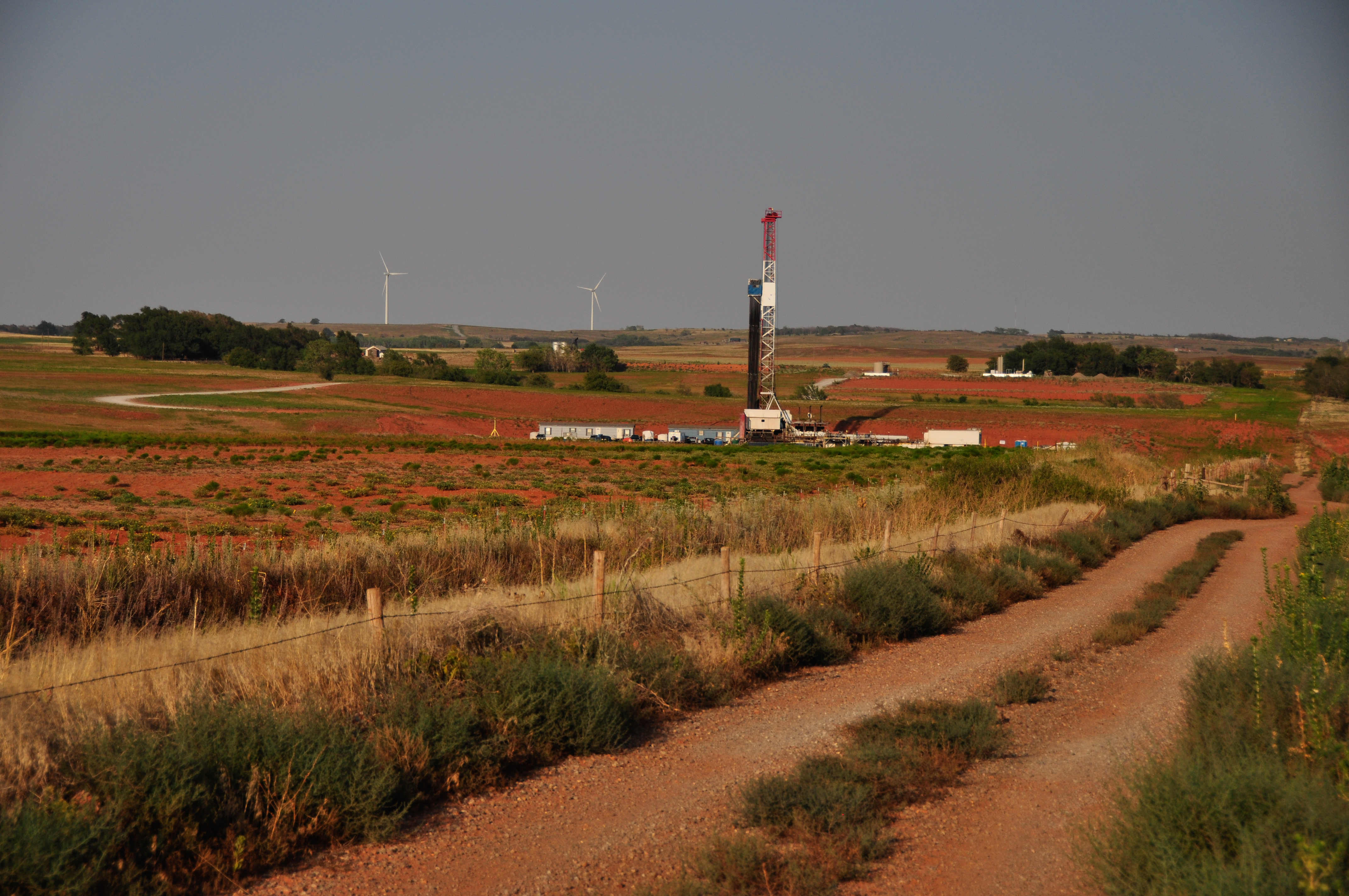
‘We will survive’
In addition to running Samson, Mills was called in as executive chairman of Midcontinent operator Roan Resources Inc., which was sold last year to Citizen Energy Operating LLC for $1 billion.
In January, Mills joined the board of Riviera Resources Inc. He said of U.S. oil and gas producers overall, “We will survive. We’ve been here before. Our industry is resilient. We are innovative. We will adapt.”
For Samson, in particular, “At some point we will sell the company, but today is not the day. We’re going to fight the good fight and get to the other side.”
ATX’s Shepherd said, “There will be opportunities. But the nature of these has changed.
“In the past, we’ve focused on resource capture by entering new basins, developing a detailed geologic model and modifying our geologic view as we did the early-stage delineation drilling.”
Having the best map isn’t in short supply now, he said. “After the industry’s almost two decades of horizontal shale-focused drilling, the boundaries of the high-quality rock in the major resource basins have been established,” he said.
“In [this phase], it’s now about being an efficient operator and getting wells drilled and completed effectively and efficiently.”
ATX is anxious to add a second project to its portfolio. “Ideally, we would like to do so in an area where we have had prior experience—until the next technological breakthrough opens the next door.”
Recommended Reading
Petrie Partners: A Small Wonder
2024-02-01 - Petrie Partners may not be the biggest or flashiest investment bank on the block, but after over two decades, its executives have been around the block more than most.
Kissler: OPEC+ Likely to Buoy Crude Prices—At Least Somewhat
2024-03-18 - By keeping its voluntary production cuts, OPEC+ is sending a clear signal that oil prices need to be sustainable for both producers and consumers.
Sunoco’s $7B Acquisition of NuStar Evades Further FTC Scrutiny
2024-04-09 - The waiting period under the Hart-Scott-Rodino Antitrust Improvements Act for Sunoco’s pending acquisition of NuStar Energy has expired, bringing the deal one step closer to completion.
The OGInterview: Petrie Partners a Big Deal Among Investment Banks
2024-02-01 - In this OGInterview, Hart Energy's Chris Mathews sat down with Petrie Partners—perhaps not the biggest or flashiest investment bank around, but after over two decades, the firm has been around the block more than most.
Shell’s CEO Sawan Says Confidence in US LNG is Slipping
2024-02-05 - Issues related to Venture Global LNG’s contract commitments and U.S. President Joe Biden’s recent decision to pause approvals of new U.S. liquefaction plants have raised questions about the reliability of the American LNG sector, according to Shell CEO Wael Sawan.






